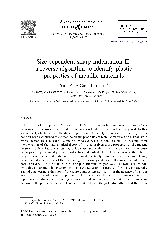摘要
In part I of this paper (Cao and Lu, J. Mech. Phys. Solids, in press), a closed-form expression of the size-dependent sharp indentation loading curve has been proposed. In this second part, which concerns the direct application of the analytical model, a reverse algorithm has first been established to extract the plastic properties of metallic materials on a small scale where the size effect caused by geometrically necessary dislocations is significant. Second, from the viewpoint of the mathematical theory of inverse problems, the properties of the present inverse problem i.e. the existence, uniqueness and stability of the solution, have been investigated systematically. The results have identified the extent to which the plastic properties of ductile materials can be determined effectively using the present method. Third, experimental verifications of the reverse algorithm using a standard Berkovich indenter have been carried out for 316 stainless steel and pure titanium, respectively. The results show that, by taking a maximum indentation depth of 1.5 and 0.8 mum, respectively for the two materials, a good engineering estimation of the representative stresses, sigma(0.033), in the absence of a strain gradient can be made using the present method, which can be used in conjunction with the representative stress corresponding to another indenter with a different tip apex angle to determine the plastic properties of metallic materials, i.e. the yield strength sigma(y) and the strain hardening exponent n. The material length scale (l) over cap can also be identified by using the present algorithm. Experimental results show that it has the correct order of magnitude, but is more sensitive to data errors than the identified representative stress.
- 出版日期2005-1
